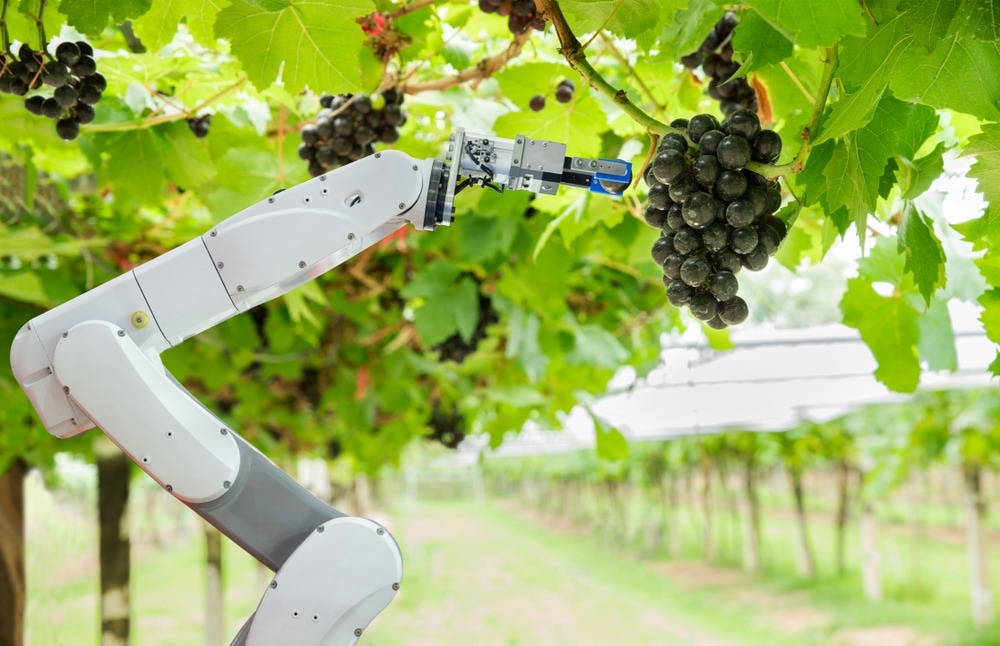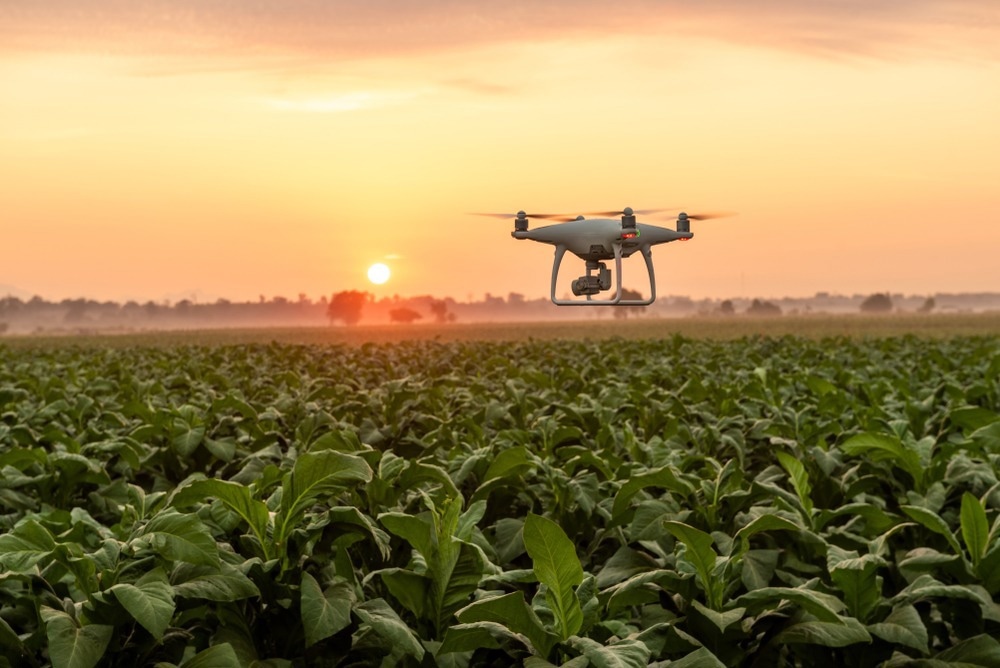Agricultural robots can significantly benefit farmers, consumers, and the environment. As a result, demand for these robots is predicted to rise in the future. However, several concerns should be addressed before this technology is utilized on a wider scale.

Image Credit: Suwin/Shutterstock.com
What are Agricultural Robots Used For?
As the global human population is expected to reach over 9 billion by 2050, the agricultural industry is under pressure to increase food production without expanding the agricultural land to ensure future food security.
The adoption of precision agriculture, which optimizes the processes involved in food production through advanced technologies such as agricultural robots, could help achieve this aim.
The robots used in precision agriculture utilize artificial intelligence to combine and interpret the data acquired from various sensors to facilitate real-time decision-making and subsequent action using their attached manipulators.
Agricultural robots can carry out various tasks, such as planting and harvesting crops, weed control using chemical or mechanical tools, application of pesticides, soil analysis, and milking livestock.
Currently, agricultural robots are primarily used to perform repetitive, physically demanding tasks. However, robots capable of increasingly specialized tasks, such as picking sensitive produce like strawberries and raspberries, which must be handled carefully, are now being developed.
Benefits and Challenges of Robot Use Within Agriculture
Agricultural robots can benefit farmers by plugging labor gaps and reducing labor costs. Robots are able to carry out dull or repetitive tasks, giving farm workers more time to concentrate on other activities, or may take on dangerous tasks to reduce the risk to farm workers.
They could also provide environmental benefits by enabling more efficient usage of resources such as fertilizer, fuel, and water and help to limit food waste by improving crop care.
Due to the significant benefits that agricultural robots can provide, their usage is predicted to increase in the coming years. In fact, the global agricultural robot market is expected to increase in value from $4 billion in 2020 to $11.58 billion by 2025.
However, despite this predicted market growth, some issues associated with agricultural robotics may discourage farmers from investing in this technology and could partially explain the relatively low levels of adoption across the global agricultural industry.
These issues include the high manufacturing and purchase cost of the robots, their requirement for an internet connection to function, and the fact that some farmers may be unsure how to operate them. These issues present particular barriers to uptake in developing countries.
It is important that developing countries are not left behind during the agricultural robotics revolution, so addressing these issues should be a priority. Introducing new robots that can perform multiple different tasks could minimize the cost of investment for those in developing countries by reducing the number of different robots that need to be purchased. However, much work still needs to be done to make this a reality.
Other concerns that need to be addressed include the possibility that some farm workers will lose their jobs as agricultural robots increase in popularity and the consequences for production if robots were to be hacked or sabotaged.

Image Credit: Love Silhouette/Shutterstock.com
The Future of Agricultural Robotics
Improvements are continually being made to agricultural robots to optimize their performance and increase the variety of jobs they are able to do. A recent review by Oliveira et al. (2021) identified four main aspects of agricultural robotics in which further research and development would be beneficial: locomotion systems, computer vision algorithms, sensors, and communication technologies.
Most available agricultural robots use four-wheel drive locomotion, even though the performance of wheeled robots may be negatively affected by certain aspects of the local terrain, such as branches and rocks.
Increasing the production and usage of legged robots could help to address this issue, as legged robots can adjust their posture according to the slope of the terrain, allowing them to navigate across uneven ground and access areas that may be difficult for wheeled robots to reach.
Computer vision also plays a crucial role in the functioning of many robots, allowing them to complete tasks such as detecting and removing weeds. Further development of computer vision algorithms is needed to optimize robot vision systems for operation on low-cost devices and enable them to adapt to daily changes in ambient lighting and seasonal changes.
It is also important to consider the quality of robot sensors. RGB cameras are the most commonly used sensors on agricultural robots and can provide farmers with a lot of information but at a high financial cost.
The development of low-cost sensors with high Ingress Protection, which can operate in the presence of dust, as well as at a wide range of temperatures and humidity levels, would greatly improve robot performance and help to reduce the up-front cost of robots, which acts as a barrier to adoption for many farmers.
Finally, future development of agricultural robotics should focus on further enhancing connectivity between individual robots. Streamlining the process of real-time data sharing through continued advancement of Internet of Things technology will enable more efficient control and monitoring of activities across entire farms and optimize overall robot performance.
Sources:
- Oliveira, L.F., Moreira, A.P. and Silva, M.F. (2021). Advances in agriculture robotics: a state-of-the-art review and challenges ahead. Robotics, 10(2), p.52. https://doi.org/10.3390/robotics10020052
- Rose, D.C., Lyon, J., de Boon, A., Hanheide, M. and Pearson, S. (2021). Responsible development of autonomous robotics in agriculture. Nature Food, 2(5), pp.306-309. https://doi.org/10.1038/s43016-021-00287-9
- Pearson, S., Camacho-Villa, T.C., Valluru, R., Gaju, O., Rai, M.C., Gould, I., Brewer, S. and Sklar, E. (2022). Robotics and Autonomous Systems for Net Zero Agriculture. Current Robotics Reports, pp.1-8. https://doi.org/10.1007/s43154-022-00077-6
- Tarannum, N., Rhaman, M.K., Khan, S.A. and Shakil, S.R. (2015). A brief overview and systematic approach for using agricultural robot in developing countries. Journal of Modern Science and Technology, 3, pp.88-101.
Further Reading
Last Updated: Dec 13, 2022